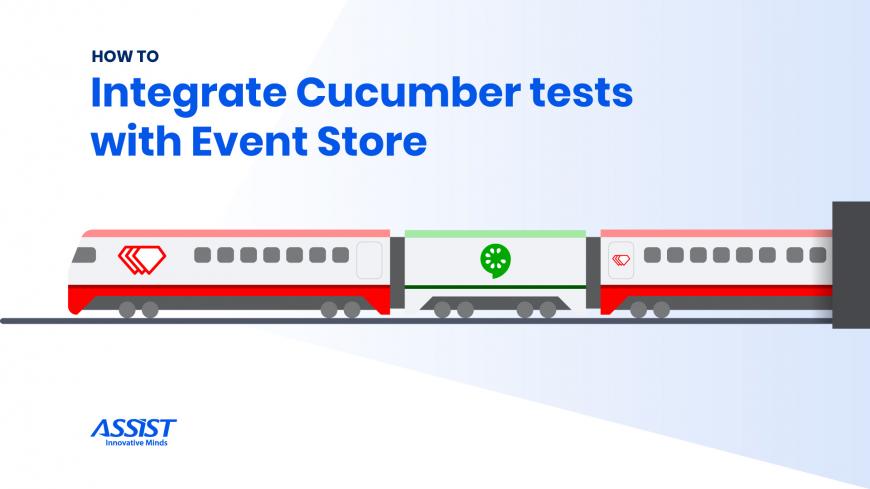1. Introduction
This is a short tutorial on how to integrate cucumber tests with Rails Event Store.
The gem for Event Store is "rails_event_store", which can be found here and for cucumber, it is "cucumber-rails", and can be found here.
2. How to integrate Cucumber Tests with Rails Event Store
In order to demonstrate this, I’ve created a demo application that stores and saves data about an item, starting with its creation, the changes of its properties and its deletion. To do this, we have a file called events.rb where all these events are defined.
Let's start by adding the required gems inside Gemfile: rails_event_store, cucumber-rails, and rails_event_store-rspec, which is the gem used by Event Store for testing. Now we can run bundle so we can use them.
gem 'cucumber-rails', require: false gem 'database_cleaner' gem 'rails_event_store-rspec'
The rails_event_store_rspec gem provides some matchers such as have_published or be_event, which can easily be used to ensure that the events are published correctly.
The next step is to include RailsEventStore::RSpec::Matchers into the cucumber setup file so we can access the matchers. We can also add a method inside this file, which we can call event_store, and which can be used to skip the call to Rails.configuration.event_store each time inside step definitions.
require 'cucumber/rails' include ::RailsEventStore::RSpec::Matchers def event_store Rails.configuration.event_store end
The events registered inside events.rb are: ItemCreated, ItemUpdated and ItemDeleted that correspond to the three main states that an item can go through.
module Events ItemCreated = Class.new(RailsEventStore::Event) ItemUpdated = Class.new(RailsEventStore::Event) ItemDeleted = Class.new(RailsEventStore::Event) end
Now that we have defined the events, we can create the step definition file and .feature file in order to test whether our events have been correctly published.
First, let’s add some data to an item. In our case, the uid and the name.
When an event is published, we can use the have_published method to check if the event was published once and if it was published on the right stream.
We can also check the number of events published for a specific stream.
Given("uid {int} and name {string}") do |uid, name| @data = { uid: uid, name: name } end When("{string} event is published") do |event| stream_name = "Item$#{@data[:uid]}" event = event_type(event).new(data: @data) event_store.publish(event, stream_name: stream_name) end Then("an {string} event should be published once for item {int}") do |event, uid| expect(event_store).to have_published( an_event(event_type(event))).in_stream("Item$#{uid}").once end Then("there should be {int} events published for item stream {string}") do | event_numbers, stream_name| expect(event_store.read.stream(stream_name).to_a.count).to eq event_numbers end def event_type(event) "Events::#{event}".constantize end
Feature: The system tracks items as they go through different states Scenario: Check if ItemCreated event is published Given uid 1 and name "item_1" When "ItemCreated" event is published Then an "ItemCreated" event should be published once for item 1 Scenario: Check if ItemUpdated event is published Given uid 2 and name "item_2" When "ItemUpdated" event is published Then an "ItemUpdated" event should be published once for item 2 Scenario: Check the number of events published by an item Given uid 3 and name "item_3" When "ItemCreated" event is published And "ItemUpdated" event is published And "ItemDeleted" event is published Then there should be 3 events published for item stream "Item$3"
3. Conclusion
In this snippet, I tried to implement some basic examples that demonstrate the integration of Rails Event Store and cucumber tests, but these examples can be extended and improved.







